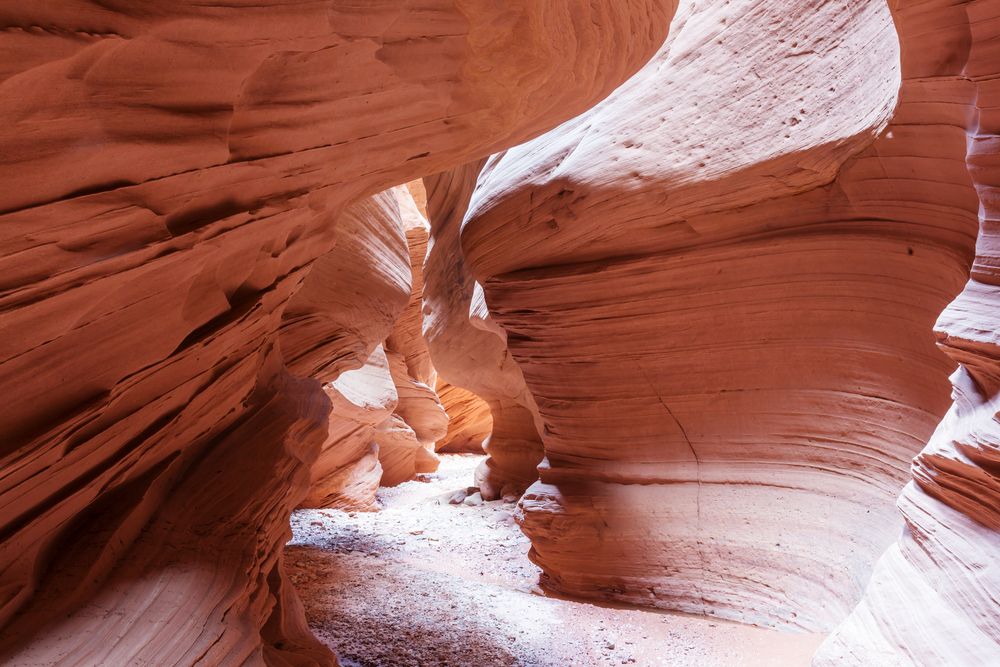Grand Staircase-Escalante National Monument in Southern Utah was originally designated in 1996 and reduced in size by presidential proclamation in 2017. The land is among the most remote in the country and is managed by the Bureau of Land Management.

Location: Grand Staircase-Escalante National Monument is located in southern Utah, covering nearly 1.88 million acres of stunning and diverse landscapes. The monument stretches from the town of Big Water to the west, to the town of Boulder to the north, and to the Paria Plateau and the Arizona border to the south.
History: The monument was established on September 18, 1996, by President Bill Clinton. Its name reflects the monument’s two main geographical features: the “Grand Staircase,” a series of massive geological steps stretching from Bryce Canyon to the Grand Canyon, and the “Escalante Canyons,” a labyrinth of narrow, twisting canyons carved by the Escalante River and its tributaries. The monument was designated to protect these unique and scientifically valuable landscapes.
Why It’s Protected: Grand Staircase-Escalante National Monument is protected for its extraordinary geological, paleontological, and archaeological significance. The monument contains one of the most complete geological records of the Mesozoic Era, providing valuable insights into the history of the Earth. It is also home to numerous fossils, including those of dinosaurs, that offer important information about prehistoric life. Additionally, the monument preserves significant cultural sites, including ancient rock art and structures created by Native American cultures. Protecting this area ensures that its scientific, historical, and cultural treasures are preserved for future generations to study and appreciate.
Things to Do: Visitors to Grand Staircase-Escalante National Monument can engage in a wide range of activities that showcase its breathtaking landscapes and rich history. Here are some highlights:
- Hiking: The monument offers a vast network of trails that cater to all levels of hikers. Popular hikes include the Lower Calf Creek Falls Trail, which leads to a stunning 126-foot waterfall, and the Devil’s Garden Trail, known for its unique rock formations and arches.
- Slot Canyon Exploration: Explore the narrow, winding slot canyons of the Escalante Canyons region. Notable slot canyons include Peek-a-Boo Gulch and Spooky Gulch, both of which offer an adventurous and visually stunning experience.
- Scenic Drives: Take a scenic drive along the monument’s backcountry roads, such as Hole-in-the-Rock Road and Cottonwood Canyon Road. These routes provide access to some of the monument’s most iconic landscapes and offer opportunities for photography and sightseeing.
- Fossil Hunting: While collecting fossils is prohibited, visitors can explore areas known for their paleontological significance and learn about the ancient creatures that once roamed the region. The visitor centers offer information on fossil sites and the monument’s rich paleontological history.
- Wildlife Watching: The monument’s diverse habitats support a wide variety of wildlife, including mule deer, pronghorn antelope, and a range of bird species. Keep an eye out for wildlife as you explore the monument’s trails and scenic areas.
- Photography: Capture the stunning landscapes, unique rock formations, and vibrant colors of Grand Staircase-Escalante. The monument’s diverse scenery provides endless opportunities for breathtaking photographs.
- Camping: Experience the beauty of the monument up close by camping at one of its designated campgrounds. Whether you prefer front-country camping with amenities or backcountry camping for a more remote experience, there are options to suit every camper’s needs.
- Stargazing: With minimal light pollution, Grand Staircase-Escalante National Monument is an excellent spot for stargazing. On clear nights, visitors can enjoy spectacular views of the night sky, with countless stars and celestial bodies visible.
Grand Staircase-Escalante National Monument is a place of awe-inspiring beauty and scientific significance. Its diverse landscapes, rich history, and unique geological features make it a must-visit destination for adventurers, nature lovers, and anyone seeking to explore one of America’s most remarkable natural wonders.
Agate Fossil Beds
Aztec Ruins
Bandelier
Bears Ears
Cabrillo
Canyon de Chelly
Cedar Breaks
Colorado
Devils Postpile
Devils Tower
Dinosaur
Effigy Mounds
El Malpais
Florissant Fossil Beds
Fort McHenry
Fort Moultrie
Fort Pulaski
Fort Stanwix
Fort Sumter
George Washington Birthplace
Gila Cliff Dwellings
Grand Staircase-Escalante
Hovenweep
Lava Beds
Little Bighorn Battlefield
Misty Fjords
Montezuma Castle
Muir Woods
Natural Bridges
Ocmulgee
Organ Pipe Cactus
Pipestone
Pompeys Pillar
Rainbow Bridge
Russell Cave
Salinas Pueblo Missions
Scotts Bluff
Statue of Liberty
Sunset Crater Volcano
Tuzigoot
Vermilion Cliffs
White Sands
World War II Valor in the Pacific
Wupatki
